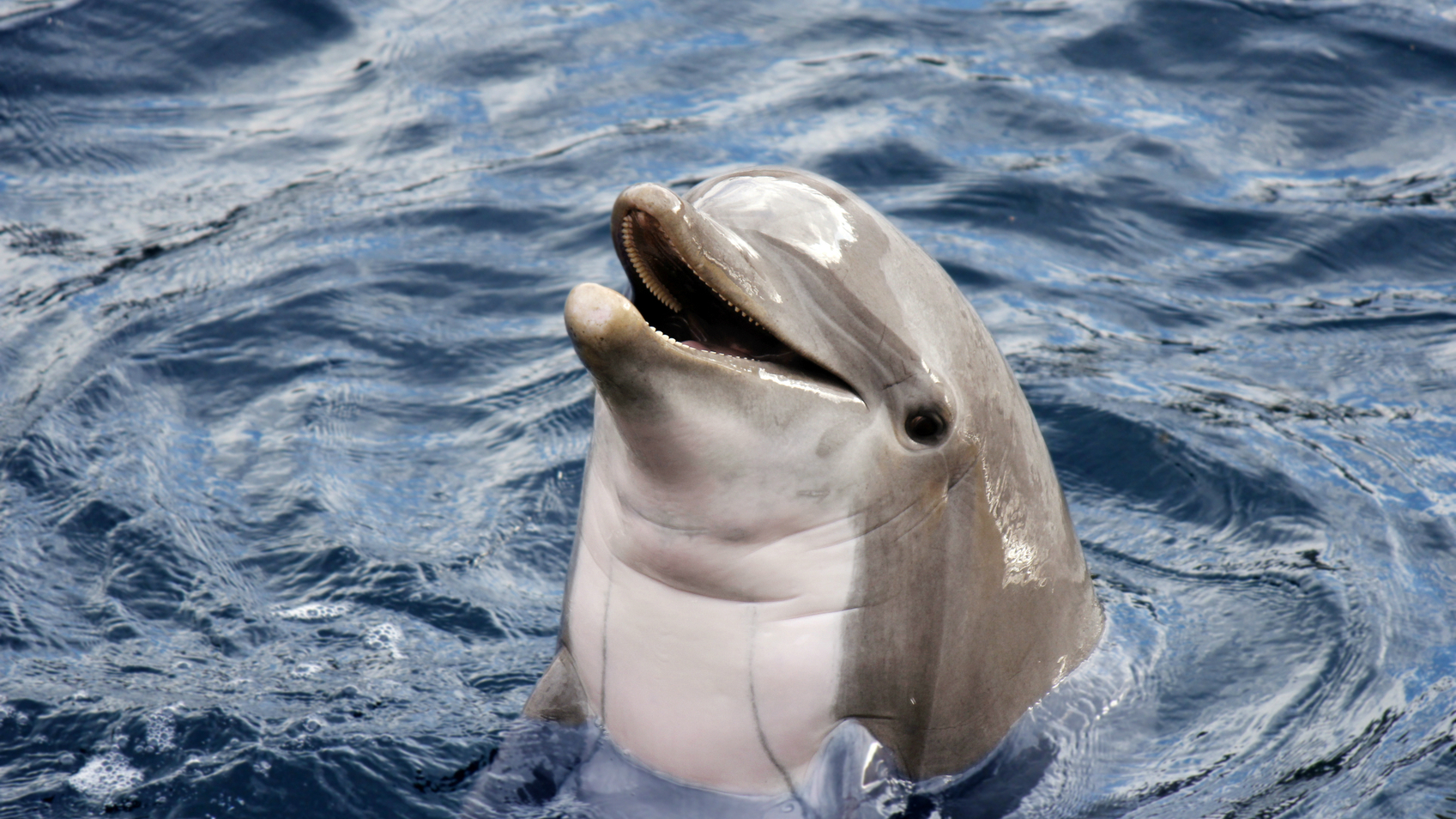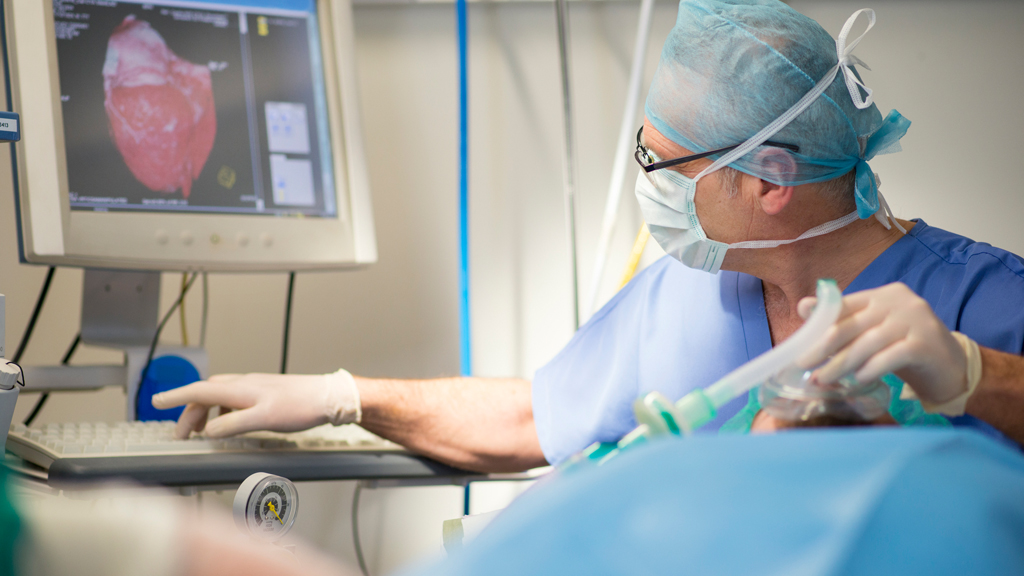'I work in acoustics, and specialise in discovering anything to do with the seabed and mapping the underwater environment.' says Dr Philippe Blondel from our Department of Physics. 'Seismic exploration involves creating loud sounds, in the water or on land. As these sounds propagate back from deep underground, they tell us about oil and gas reservoirs, geo-hazards and geology in general.'
What can you discover with sound?
‘By sending sound waves we can locate different kinds of objects: animals, rocks, plants and so on. We can also tell whether we’ve found a cliff face or a coral reef, for example, and how far away these objects are. We determine this from the corresponding bounce. Experience means we recognise what we’ve encountered, and can make maps from the information.
‘We can also sense caves, reservoirs or other objects that are unexpected. Our sound waves ripple out, or propagate, just like when you drop a stone on a pond. The ripples and changes we detect as they reflect back to us tell us what’s likely to be there; they are echoes from these objects. We can even find buried faults that could potentially be dangerous, or may have been caused by a tsunami or similar catastrophe in the past.
‘It’s a bit like if you were placed, blindfolded, in a theatre. You’d begin to detect different frequencies to work out where the curtains were; you’d hear stage movements, people whispering in the wings, heat expansion noises from the lighting rig, the open space of the auditorium… and you’d get an idea of not just where these areas were located, but how big they are.
‘Underwater, lower frequencies–like a seismic pulse–can travel further, to the targets and back, though we can only do this in an environment that isn’t too noisy. It’s the same principle as the sonar ping on submarines, where it’s so dark and deep that the crew uses sound to ‘see’ around them and navigate accordingly. Many metres below the surface, the pings being sent out, and then coming back, can be heard loudly all over the vessel.’
What do you most enjoy about your work?
‘Underwater sound can be fun! We can send a massive sound wave or stack little ones and, little by little, trace big changes that are taking place under the sea bed, even several kilometres below. Certain frequencies will travel though sand, through rock… anything.
‘We can also utilise this technology to find pockets of gas or oil, which is how energy companies now know where and how to drill, which may be sideways rather than down. With the right frequencies we can even direct sound to the centre of the earth, a distance of around 6,000 kilometres.
‘Sound travels at different velocities, depending on the material it encounters. For example, it moves through air at 340 metres per second, and in water it’s five times faster at 1,500 metres per second. In rock it can move at several kilometres per second.’
Is your work all theoretical, or do you get out of the lab?
‘We often work on ships, using airguns at the rear to create loud seismic pulses using compressed air, and we can control the direction of the sound a bit like aiming a torch, focusing on the seabed we want to examine. Once, when I was on a research vessel, the whole boat vibrated every ten seconds. But seismic sources come in all sorts of sizes, and some are louder than others.’
Why do marine animals need protection, and how do you find them?
‘Sound can be lethal. Since the 1920s, people have recognised that using dynamite for fishing can kill fish by bursting their eardrums. Early seismic activity was clearly not good for marine animals, including mammals. It’s physically dangerous as well as frightening for them, and in many countries strict regulations now govern seismic activities and loud sources to protect them.
‘We constantly look for animals when we’re conducting seismic activity. This is still mostly done by visually scanning the sea surface, but it’s difficult to distinguish an animal like a dolphin or whale from a wave at a distance, especially in bad weather; and besides, they may be swimming in deeper waters.
‘We’ve known for a long time that animals can be detected by the sounds they make. Now, understanding what frequency they hear at, and being able to assess the loudness of the noise we make, means we can mitigate accordingly, depending on the source and how close the animals are. We stop everything if we find them, though they mostly flee when they hear noise.’
How did Bath get involved?
‘The University’s first project to assist seismics was inspired by Dr Adrian Evans, Head of our Department of Electronic & Electrical Engineering. One of his students was working on detecting objects using stereo cameras, which determine distance more efficiently than one, just as two eyes do. Combining visible and infrared cameras, they can now scan 360 degrees in all kinds of weather conditions, efficiently detecting any animal at the surface.
‘Seiche Limited, a world leader in marine acoustics, asked Adrian to conduct more research, and we got in contact in about 2013. We decided to investigate how loud the sources of sound from airguns are, under water, depending on the frequencies they emit as well as the environment in which they work. For example, a slope in the sea bed makes the noise louder and more spread out, or the noise can alter because fresh water is flowing into the sea and makes it quieter at some depths.
‘We can predict the best places to measure sound and what it is via a mathematical approach, which is where Professor Chris Budd comes in, and what the KTP (Knowledge Transfer Partnership) was about: sharing knowledge between academia and industry and helping companies design new products. And being the first ones to do so increases British industry competitiveness in the process.
‘Together, Chris and I confirmed that measurements in shallow water are totally different from those in deep sea, both mathematically and in terms of physics. Instead of a nice, regular, circular mitigation zone within which animals must be protected, we found more asymmetric areas. This means that a whale, for example, could be affected by noise further away than we’d expected; and conversely, that an animal may not be at risk, even when it’s quite close to the source in another direction.
‘In short, we proved that we really need to know exactly how and where to look to ensure creatures won’t be harmed; and that the mitigation zone we calculate depends on variables like the depth of the water, the ocean conditions, the geology and the types of sounds.'
‘To meet the demand from government and other agencies across the world, we and Seiche have created a commercial product called Sound Source Verification’ (SSV). Seiche customers can measure, monitor, record and control their sources in line with legislation, define specific marine mammal mitigation zones for their locations, and fine-tune them for better protecting marine life.’
This project appears to have involved many other researchers at the University?
'Yes, because this project was developed into another KTP with Seiche involving Professor Manuchehr Soleimani from our Department of Electronic & Electrical Engineering.
'By using the techniques of electromagnetic tomography with sound waves, we can find animals that aren’t visible at the surface, or that are submerged but not vocalising. Acoustic tomography is like a surgeon searching the whole body for a possible tumour and producing a 3D image. In our case, we look for relatively small objects like a 30-metre whale roaming freely in a huge body of water, to map their environment and record their behaviour when exposed to man-made sound.'
What part of your work has been most satisfying?
'Financially, this project resulted in the biggest KTP investment the University of Bath has received to date, and it’s received a lot of international exposure and interest because all marine creatures will benefit. By aiming to find ‘hidden’ animals within the mitigation zones, or using far-away sound waves to detect them, we hope to gain an even better understanding of how marine life reacts to these surveys or other disturbances. Seismic sources offer exciting and wide-ranging opportunities.'
The most satisfying aspect of this project has definitely been working at the forefront of this field with Seiche. It’s really exciting to carry out new research at Bath, and see it applied all around the world.


